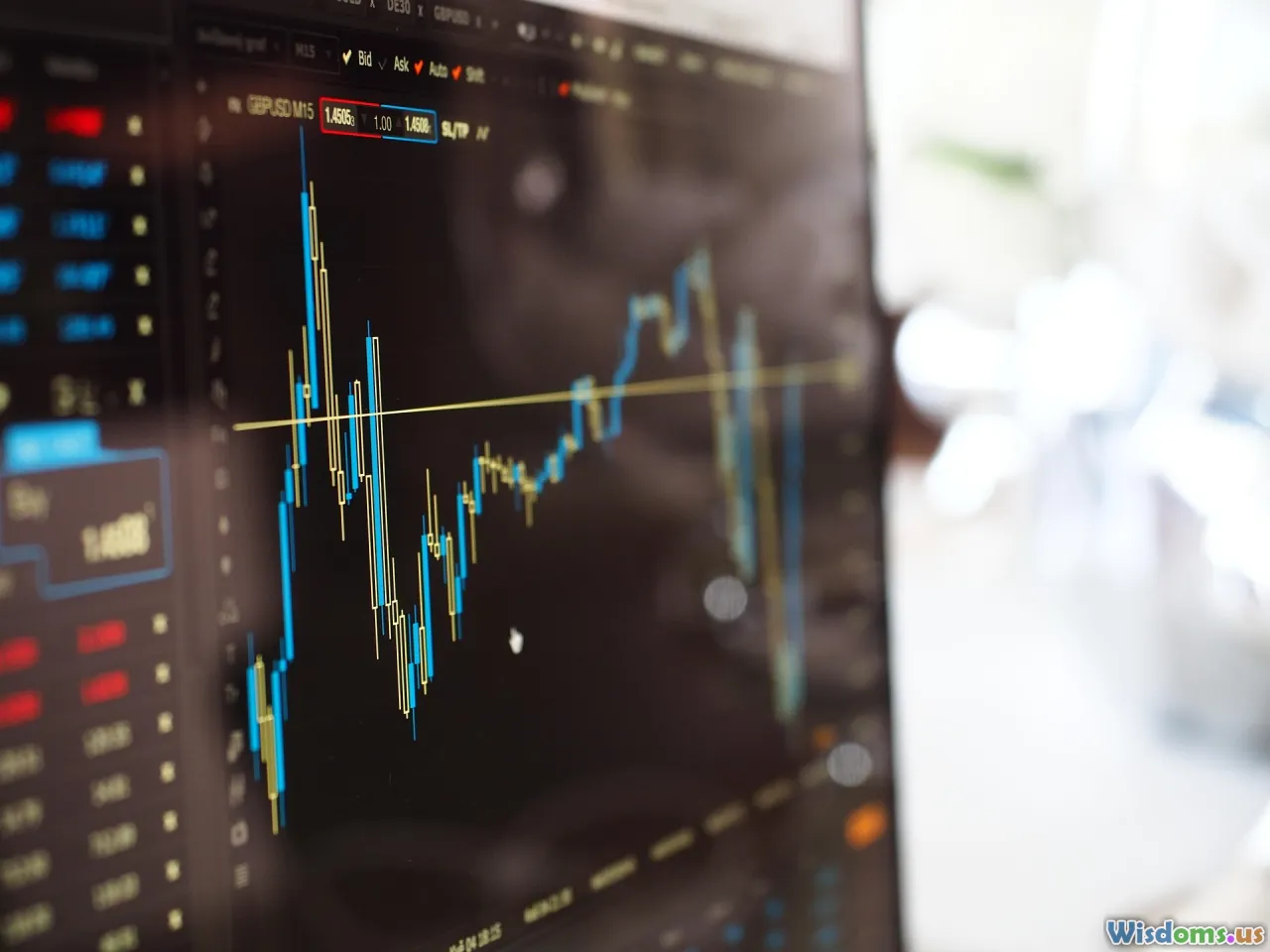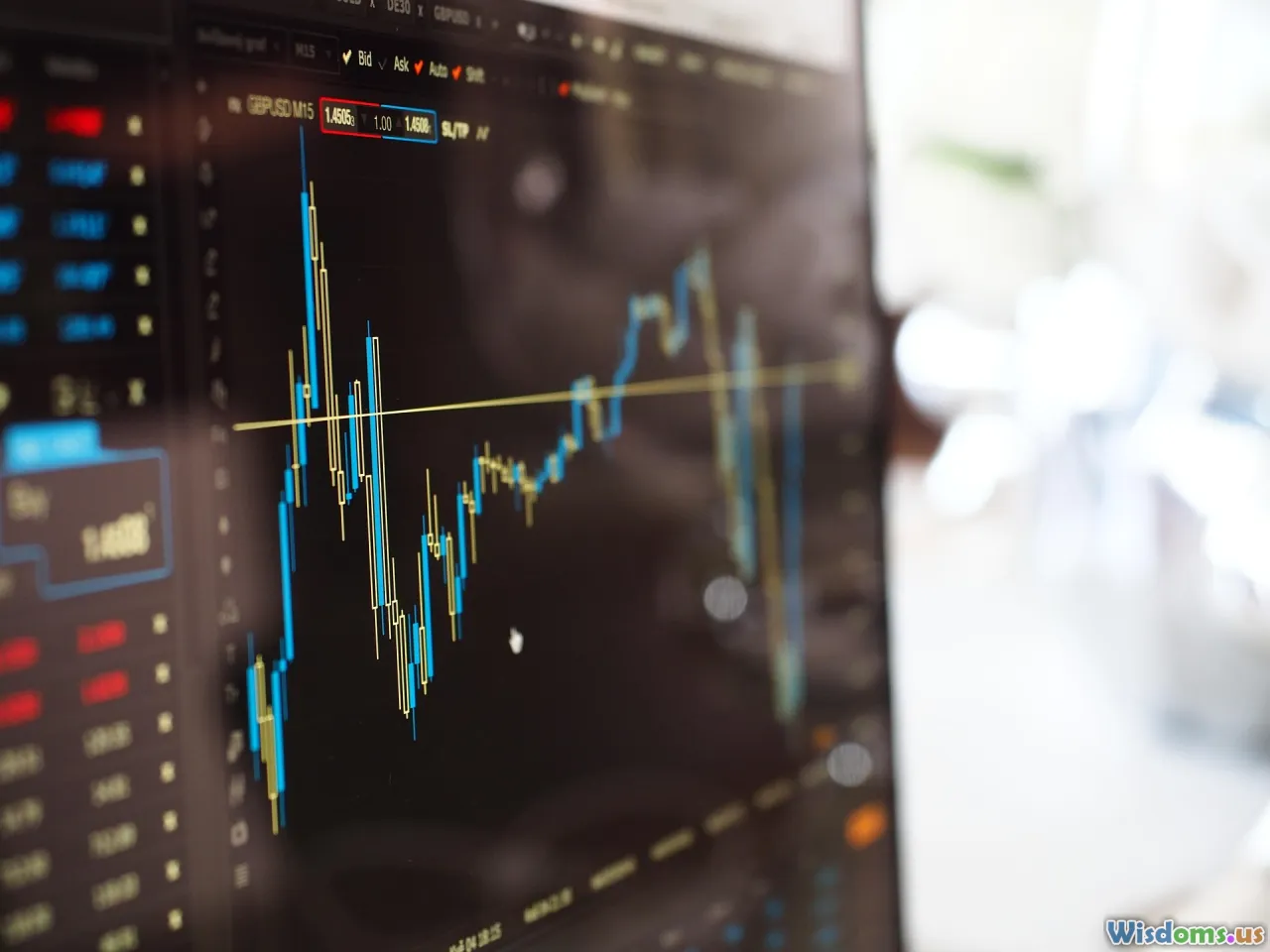
Value Investing Versus Growth Investing Which Wins in 2024
16 min read Explore the pros and cons of value investing versus growth investing to see which strategy leads in 2024. (0 Reviews)
Value Investing Versus Growth Investing: Which Wins in 2024?
Every year, investors revisit the age-old debate: value or growth? In 2024, with global markets recalibrating after the AI upheaval, inflation debates, and monetary pivots, the crackle between these two styles feels fresher than ever. But which strategy truly delivers in today's climate—and how should savvy investors recalibrate?
Revisiting Value and Growth Investing: What Do They Really Mean?

Value investing centers on finding undervalued companies—those trading for less than their intrinsic worth. Icons like Benjamin Graham and Warren Buffett famously scoured company fundamentals, hunting bargains that would eventually reprice to higher valuations. These stocks often feature low price-to-earnings (P/E) ratios, stable dividends, and storied histories: think JPMorgan Chase, Procter & Gamble, or ExxonMobil.
Growth investing, by contrast, seeks firms expanding revenues—and, ideally, earnings—rapidly. Growth companies invest heavily in scaling their operations, sometimes at the expense of near-term profits. Amazon and Tesla were the archetypes a decade ago; in 2024, names like Nvidia and Super Micro Computer often dominate this narrative. Growth stocks typically sport high P/E ratios, sparking debates about speculative bubbles.
2024: An Investing Landscape in Flux

This year, conditions are noticeably more complex than in recent memory. The Federal Reserve has signaled its intention to keep rates higher for longer—partially to tame ripple effects from stimulus eras and supply-chain shocks. Meanwhile, artificial intelligence, clean energy, and digital transformation are redrawing sector performance leagues.
Surprisingly, inflation remains sticky, and earnings projections have softened in parts of the economy. As a result, value stocks (which often hail from sectors like financials, healthcare, or energy) have shown resilience in the first half of 2024. According to FactSet, the S&P 500 Value index outperformed its Growth counterpart in the January-March stretch—a reverse of the 2020-2023 pattern when tech soared ahead.
But growth isn’t out for the count. Markets have shown unrivaled enthusiasm for AI juggernauts and cloud infrastructure providers. Nvidia, for example, reported triple-digit year-on-year revenue growth in Q1 2024, blasting past even the most optimistic analyst calls. While drawdowns remain a risk given lofty valuations, pockets of explosive growth cannot be ignored.
Historical Returns: The Long View

Academic studies routinely show that neither value nor growth stocks dominate every year; their cyclical popularity swings with macro trends.
- 1926–2021 (Ibbotson Data): Value stocks returned an average annual gain of 13.4%, handily besting growth's 9.8%.
- 2010-2022: Growth outperformed as tech firms revolutionized productivity and consumer behavior, with the FAANG basket (Facebook/Meta, Apple, Amazon, Netflix, Google) generating outsized shareholder returns.
However, the 2022-2023 inflation shock brought value back into favor. Energy, commodities, and consumer staples—traditionally value havens—delivered strong returns, often outpacing the S&P 500 and the hyper-growth stories weighed down by high interest rates.
In retrospect, the winning strategy has historically tilted toward value over the longest measured periods, yet growth trounces value in loose-money eras and technological revolutions.
How Rate Policies Shape Value and Growth

Why do rising rates often favor value? The answer lies in cash flow and discounting.
Growth companies, by nature, derive much of their valuation from profits expected far into the future. Rising interest rates make those distant profits less valuable in today's dollars, often leading to compressed P/E multiples. Value stocks, conversely, usually generate cash in the here-and-now, and so are less susceptible to rising rate environments.
2024 exemplifies this relationship:
- With benchmark U.S. rates hovering near 5%, discounts applied to far-future growth profits are steeper.
- Large asset managers, such as BlackRock, report increased weighting to value and dividend-focused exposures in client portfolios—seeking shelter from rate-based volatility.
Bond yields above 4% compete directly with speculative growth plays. As cash and bonds provide higher risk-adjusted income, some investors inevitably rotate away from richly valued growth names.
Sector Winners and Losers in 2024

Diving deeper into sector results gives nuanced insight into value vs. growth dynamics.
-
Technology & Communication Services: Companies like Nvidia (+125% YTD per Morningstar), Meta, and Alphabet continue to generate headlines and dominate growth indices. Data centers, semiconductors, cybersecurity, and AI platforms benefit disproportionately from outsized capital investment and market enthusiasm. Their valuations, however, are often stretched.
-
Energy & Financials: Oil majors (Chevron, Shell) and big banks (JPMorgan, Bank of America) have benefitted from high commodity prices and widened net interest margins. These traditionally value-heavy sectors rewarded shareholders with both price appreciation and dividends in the first months of the year.
-
Healthcare: Pharmaceuticals and insurers offer a hybrid profile. UnitedHealth Group and Johnson & Johnson demonstrate enduring value through cash-generative operations—even as the sector chases innovation through biotech and AI applications.
-
Consumer Staples: With inflation lingering, steady-eddy names such as Procter & Gamble or Coca-Cola attract investors seeking ballast against macro uncertainty.
-
Discretionary & Unprofitable Tech: High-profile retailers and pre-profit growth tech companies have been the laggards. Constrained consumer appetite and profitability challenges still weigh here.
The lesson: 2024 rewards selectivity. Passive index strategies may tilt growth, but blending into overlooked value spaces taps protective outperformance.
What Leading Investors Are Doing Now

Major institutional players continue to diversify between value and growth, adjusting weights dynamically:
- Bridgewater Associates, the giant hedge fund, has rotated more toward value and non-U.S. developed market equities, citing high valuations in U.S. growth names and possible mean reversion.
- Warren Buffett’s Berkshire Hathaway remains characteristically value-anchored, holding steadfastly to Apple for its cash flows, but increasing exposure to energy and insurance.
- Cathie Wood’s ARK Invest sticks to innovation: the fund doubled down on gene therapy and AI-exposed firms, betting that secular growth outpaces the effects of rate hikes long-term.
Retail investors, too, have increasingly adopted barbell portfolios. According to a 2024 Vanguard study, the number of client accounts with both high dividend (value) and tech sector (growth) ETFs swelled by 12% quarter-on-quarter—seeking resilience and optionality.
Practical Strategies: Blending Value and Growth in Your Portfolio

How can individuals best position for what lies ahead? Some actionable strategies:
- Core and Satellite:
- Choose a broad market ETF as a core (e.g., S&P 500, which has blended exposure), and supplement with dedicated value (VTV, IVE) and growth (VUG, IVW) ETFs as satellites.
- Periodic Rebalancing:
- Regularly review allocations to trim sectors or styles that have become overweight. This naturally locks in gains from styles that have recently outperformed.
- Dividend Growth Stocks:
- Focus on companies increasing dividends year after year—combining value’s cash generation with growth’s future promise. Microsoft and PepsiCo have notable 2024 dividend bumps, remaining favorites for such hybrid investors.
- Thematic Exposure:
- Gradually incorporate themes (AI, clean energy, healthcare innovation) but beware of crowding into overvalued names. Diversify by geography, sector, and company maturity.
- Dollar-Cost Averaging:
- Regular, small investments regardless of market conditions smooth volatility and reduce the risk of ill-timed, lump-sum deployments, a key factor in unpredictable years like 2024.
The Psychology of Investing: Handling Volatility and Hype

Even the best portfolios are subject to the investor’s greatest foe: emotion. Hype-driven markets, meme stock frenzies, and black-swan events (remember early 2020?) can knock even seasoned investors off course.
A few tips to maintain perspective:
- Ignore Daily Noise: Long-term value creation almost never hinges on intraday moves. Zoom out.
- Understand Personal Risk Tolerance: Value portfolios can underperform for years before rewarding patience. Growth allocations often entail wild rides—be sure you can stomach the drawdowns.
- Document the Rationale: Write down your investment thesis for each position—stick to fundamentals, not headlines.
- Avoid Herding: Just because Nvidia’s latest earnings beat made headlines doesn’t mean it’s right for every investor, especially at a nosebleed 96x P/E (as of June 2024).
What Does the Data Say: 2024 Returns (So Far)

With half of 2024 under our belts, we have usable field data:
- S&P 500 Value (SPYV): +8.8% YTD (through June, per Bloomberg)
- S&P 500 Growth (SPYG): +11.6% YTD
While broad growth indices lead, the gap isn't as dramatic as in 2021. Narrow market leadership, concentrated in a few tech names, tells a cautionary tale—most S&P stocks lag the headline index gain, which is cap-weighted and overly influenced by mega-tech’s outperformance.
Under the radar, certain value picks have shined—for example, JP Morgan continued to raise dividends and buy back shares aggressively post-earnings, outpacing expectations even in a rising-rate regime.
Geopolitics, AI, and the New Market Narrative

The next leg of the value vs. growth debate will hinge on global events. Decoupling between U.S. and China adds risk and opportunity in emerging value plays (think Brazil, India). Europe is quietly advancing in green energy and consumer brands, giving new life to their often-overlooked value sectors. Meanwhile, the AI arms race is catalyzing fresh capital flows—and not just into U.S. mega-caps but niche firms abroad.
Smart investors increasingly think in global terms. McKinsey research shows U.S.-centric growth investing now risks geopolitical blind spots. Diversifying internationally, or hedging with commodities and non-U.S. value stocks, could insulate portfolios in a turbulent decade.
So, Who Wins in 2024?

There’s no perfectly clear winner—flexibility and selectivity matter most. Pure growth strategies—especially in frontier technologies—have delivered headline-grabbing wins, but not without heightened risk and volatility. Value is earning its unexpected comeback thanks to steadfast earnings, dividends, and macro defenses against interest rate shocks.
For most investors in 2024, the wisest play is balanced exposure: blending a structural allocation to blue-chip value with tactical, carefully chosen pockets of growth. Stay diversified geographically. Rebalance systematically as the cycle turns. Focus on fundamentals while keeping emotion in check.
With so many variables in play, the winner may not be a side—but the investor with patience, discipline, and agility. Those willing to adapt—merging nuggets of value discipline with selective growth harvesting—are poised to win, no matter which style leads the scoreboard by year’s end.
Rate the Post
User Reviews
Popular Posts















